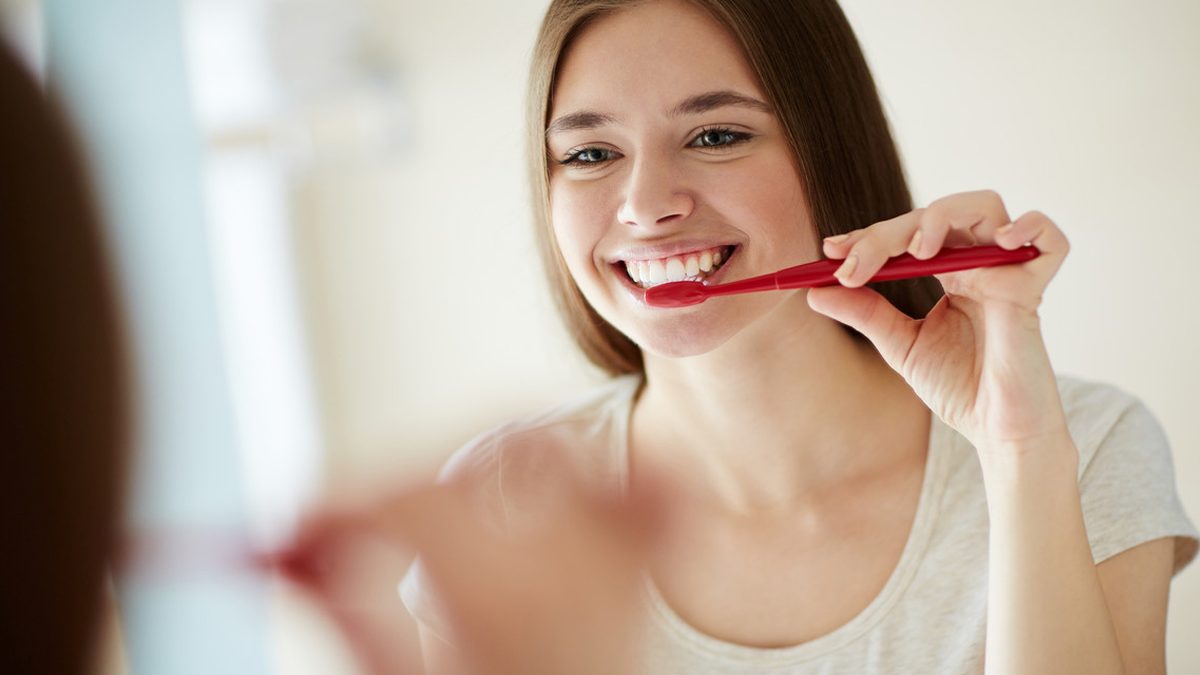Having your teeth professionally cleaned feels like a dental health reset. Your teeth are meticulously cleansed, scraped, and polished. It’s up to you whether they stay that way. What happens at home (think Vegas rules) may differ significantly from what occurs at the dentist’s office. But don’t clench your teeth about it. Check out these three tips to improve your tooth-brushing game while also improving your health.
1. Recognize the motivations.
Bits of food or residue might stick to your teeth and gums every time you eat or drink something. Plaque is formed when dirt and bacteria combine to form a sticky coating. It calcifies if left on the teeth for too long. Calculus is hardened plaque that cannot be removed with a toothbrush.
“Bacteria within the calculus produce acids that cause cavities, erode your enamel, and tunnel into the tooth toward the nerve and jaw bone, causing infection if left untreated. Bacteria can then spread to other parts of your body, such as the brain, heart, and lungs “says Dr. Tien Jiang, a prosthodontist at the Harvard School of Dental Medicine’s Department of Oral Health Policy and Epidemiology.
Plaque-related bacteria can also irritate and infect the gums, causing gum tissue, ligaments holding the teeth in place, and jaw bone damage, ultimately leading to tooth loss.
Knowing all of this, it may come as no surprise that poor oral health is linked to a variety of health concerns, including high blood pressure, heart disease, diabetes, rheumatoid arthritis, osteoporosis, Alzheimer’s disease, and pneumonia.
2. Choose a nice toothbrush.
The toothbrush selections are dizzying, ranging from simple plastic sticks with bristles to high-tech instruments with bristles that rotate or vibrate. But, as Dr. Jiang points out, “it’s not the toothbrush that matters; it’s the approach.” “You might have a brush that does everything for you. Even with an electric toothbrush, you’ll miss plaque if you don’t have a good brushing technique.”
So be wary of flashy marketing claims that one toothbrush is superior to another. Instead, she suggests:
Purchase a toothbrush that you enjoy and will use on a regular basis.
Choose bristles based on the state of your gums. “If your gums are sensitive, you’ll want gentle bristles that won’t irritate them. It’s fine to use strong bristles if you don’t have gum problems “Dr. Jiang claims
Every few months, replace your toothbrush. “If the bristles are splayed out and no longer upright, or your teeth don’t feel clean after brushing,” Dr. Jiang explains.
What if you want an electric toothbrush because it’s difficult for you to hold a brush or brush properly, or you just like the gadgety-fun allure of a high-tech brush?
Dr. Jiang agrees, whether it’s a fancy device with a timer, pressure sensors, Bluetooth connectivity, and applications to guide you through brushing (prices range from $40 to $400) or a simple battery-powered gizmo (prices start at $5). “Just try it out to see whether you’re comfortable with the settings, and bring the toothbrush to teeth cleanings if you have any questions about how to use it,” she advises.
3. Apply the proper brushing technique.
Dr. Jiang recommends adopting the following brushing routine twice day, regardless of toothbrush type, and flossing before or after each time:
Brush your teeth for two minutes using fluoride toothpaste. Divide the time in 30 second increments between the upper left, upper right, lower left, and lower right teeth.
The brush should be angled. “The bristles should be pointed at the gums where they contact the teeth, where plaque and calculus accumulate. The bristles should not be perpendicular to your teeth at a 90-degree angle, but rather inclined at a 45-degree angle “Dr. Jiang claims
With the bristles, make circles. “Rotate the bristles in a gently sweeping motion to assist catch dirt at the gum line,” Dr. Jiang recommends.
Brush without interruptions so that you may concentrate on your brushing technique.
Be kind with yourself. If you brush too forcefully, you could irritate and perhaps harm your gums. Brush your tongue as well. It collects a lot of bacteria, which must be swept away.
Rinse your mouth and clean your teeth. Remove any traces of toothpaste and food residue with water.
Examine your teeth and gums. Pull your lips away from your teeth after brushing to determine if you left any food particles around your teeth. Your gums should not be puffy or red.
Not sure if you’re brushing properly? Dr. Jiang recommended that you practise without toothpaste. Everything should feel smooth when you touch your tongue against your teeth.
Visit a dental hygienist every six months for cleanings, and your dentist at least once a year – even if these visits make you nervous. Also, if you detect any difficulties between visits, contact the dental team. But keep in mind that healthy home practises, not the dentist’s office, do the most of the work in keeping your teeth clean.
Post Disclaimer
Please understand that any advice or guidelines revealed here are not even remotely a substitute for sound medical advice from a licensed healthcare provider. Make sure to consult with a professional physician before making any purchasing decision if you use medications or have concerns following the review details shared above. Individual results may vary as the statements made regarding these products have not been evaluated by the Food and Drug Administration. The efficacy of these products has not been confirmed by FDA-approved research. These products are not intended to diagnose, treat, cure or prevent any disease.
